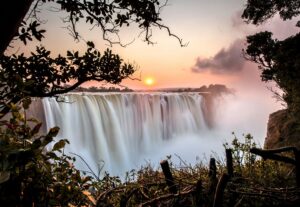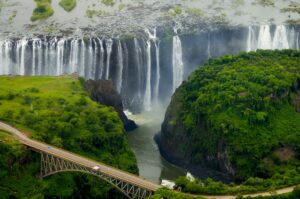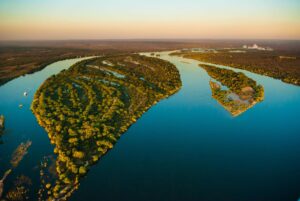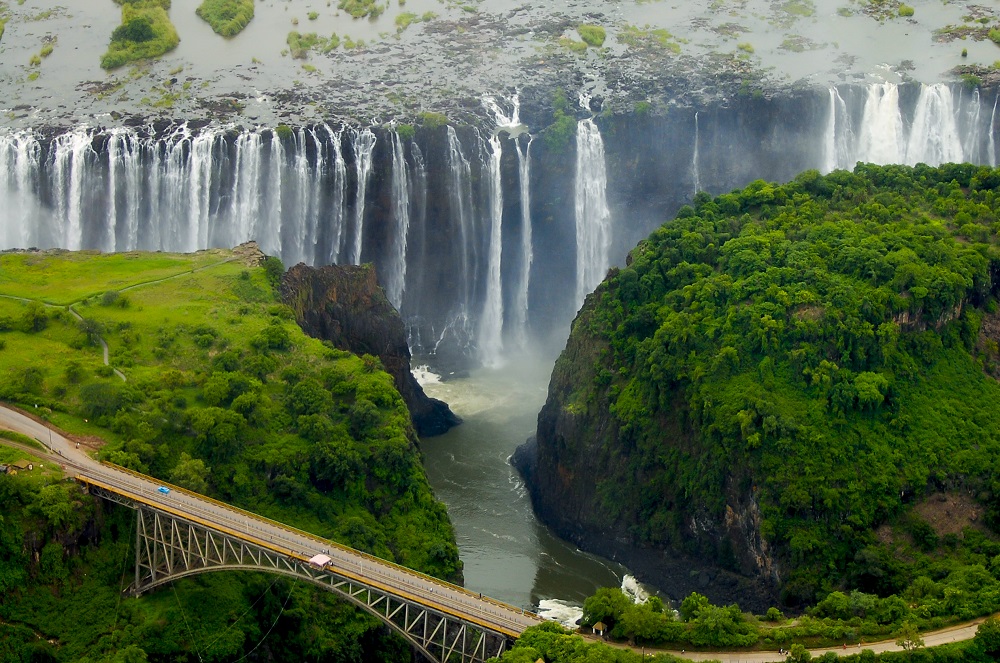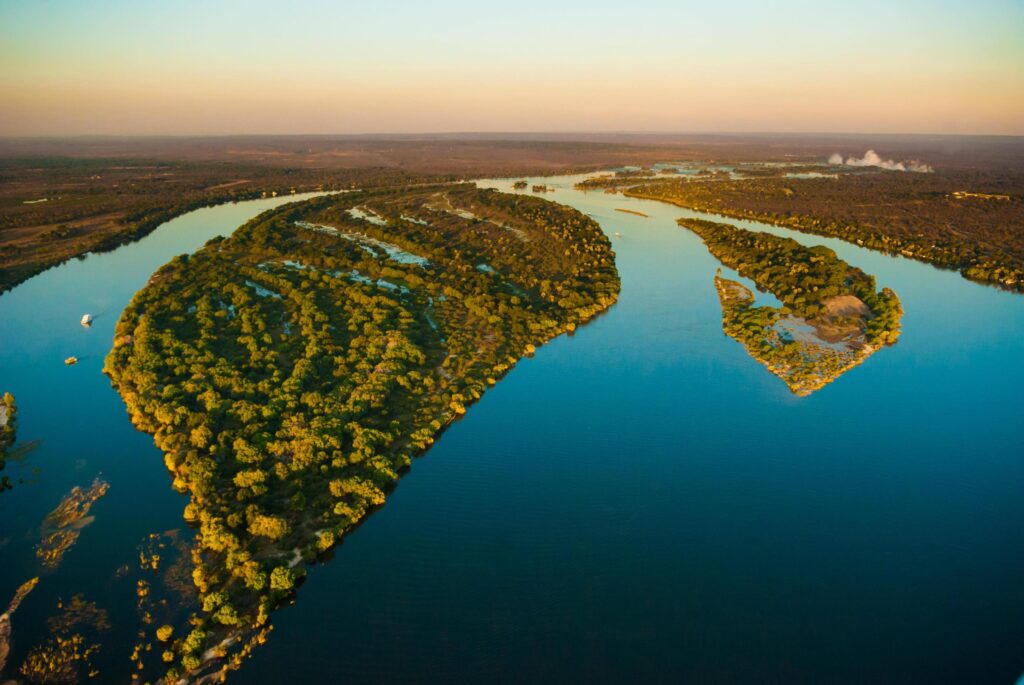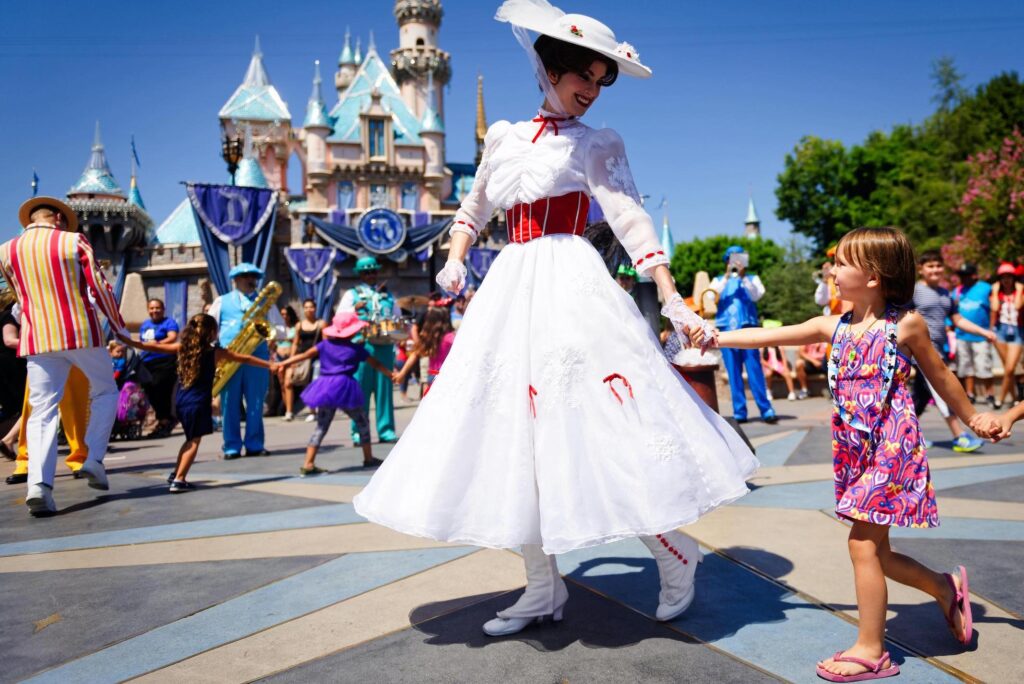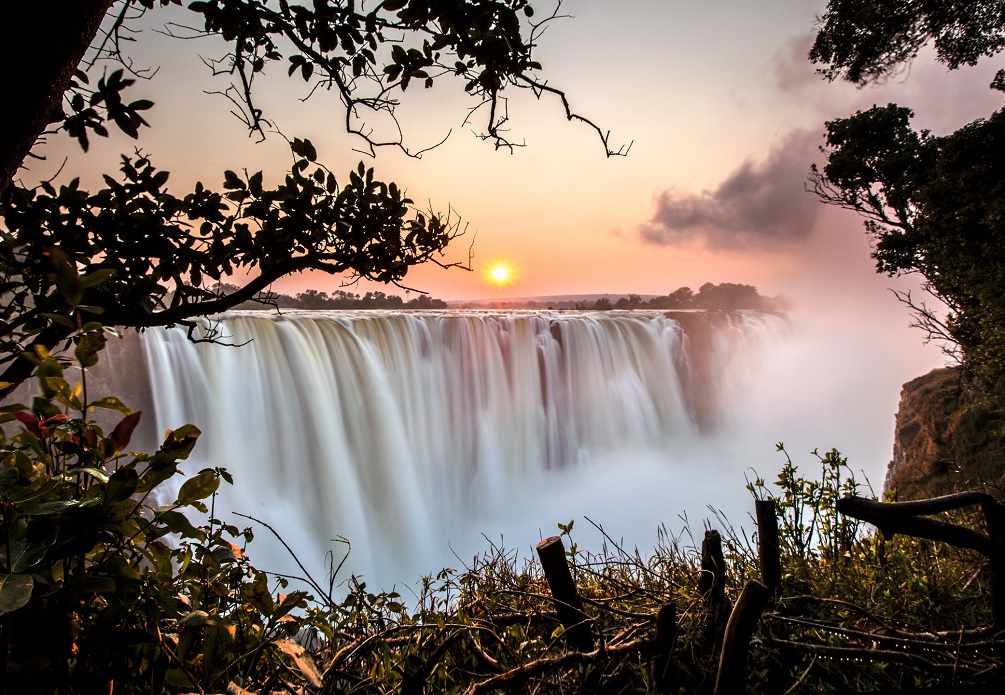Zimbabwe
With amazing landscapes, medieval ruins, and incredible wildlife, Zimbabwe, possibly the most underrated destination in Africa, has all the credentials to become your next travel destination!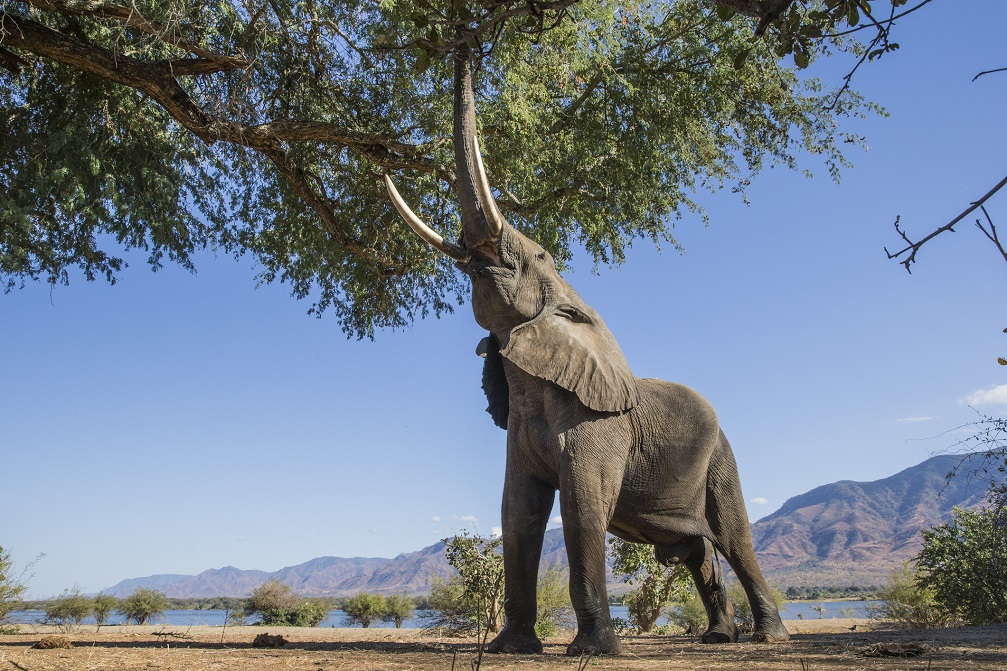
Even though not many people take Zimbabwe into account when planning their holidays, this country is full of potential! Zimbabwe has plenty of national parks where you will be able to observe stunning landscapes. From the mountains of Chizarira National Park to the sandstone cliffs of Gonarezhou National Park and the unique Batoka Formation of Hwange National Park, the options are endless! Here you will also have plenty of opportunities to organize safaris where you will be able to see exotic animals such as hyenas, elephants and lions. But Zimbabwe is also a good destination for visitors interested in the history of Africa. This country is home to the World Heritage site of Great Zimbabwe, a medieval town that is believed to have been the capital of an unknown ancient kingdom. Are you intrigued? Keep reading for more information!
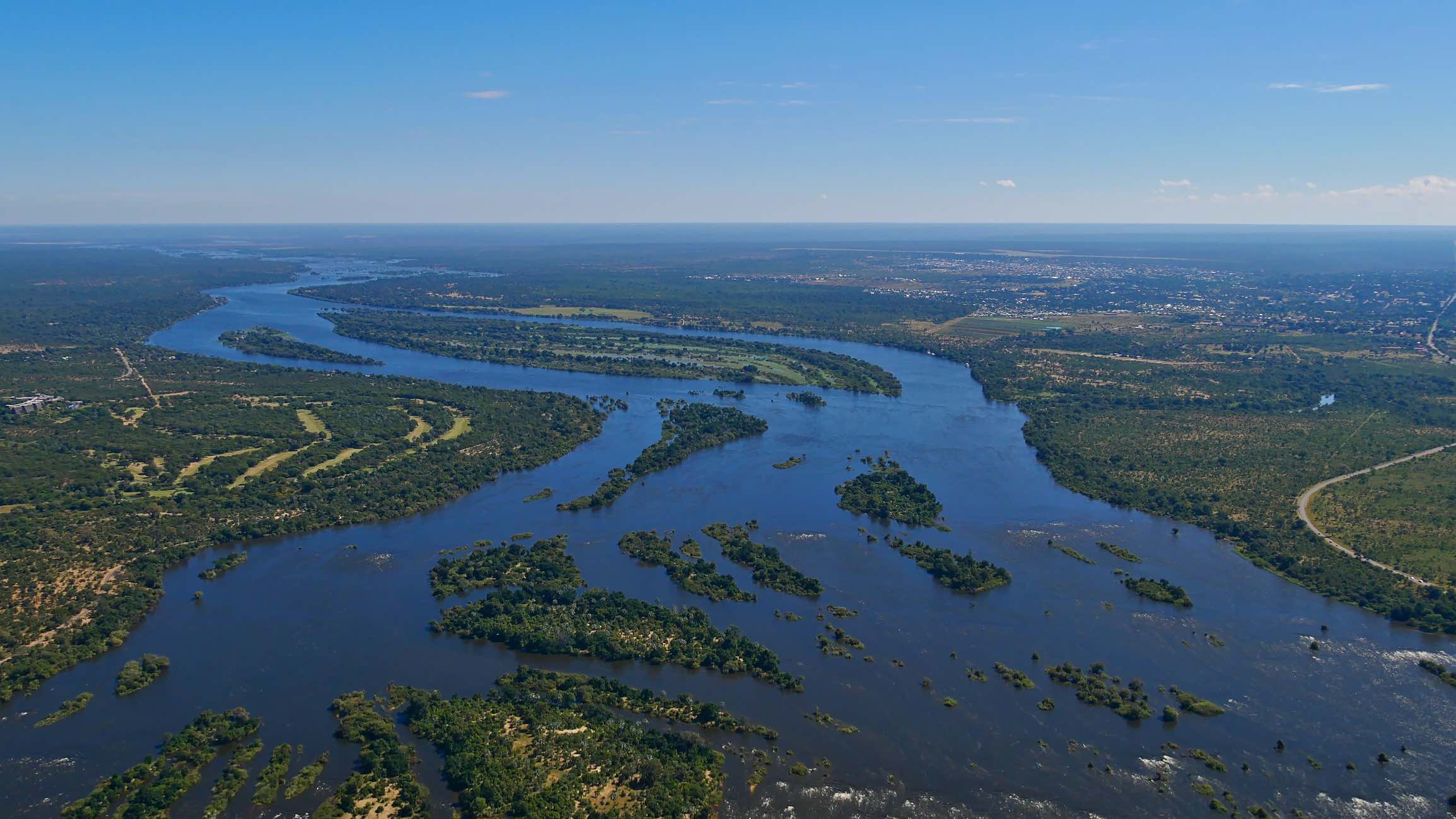


Zimbabwe is situated in the south of Africa and it’s bordered by Mozambique to the east, by South Africa to the south, and by Botswana and Zambia to the west. The capital, Harare, is situated in the northeastern part of the country. Zimbabwe is a landlocked country and doesn’t have access to the sea. However, here you will find one of the biggest waterfalls in the world, the majestic Victoria Falls.
Zimbabwe can be divided into three geographic regions, Highveld, Middleveld and Lowveld. The Highveld is a ridge that extends from the southwestern part of the country to the northestern part. It’s about 50 miles wide and it reaches its highest altitudes at Mount Inyangani at 8,504 feet. On both sides of the Highveld lies the Middleveld, a plateau of 3,000 to 4,0000 feet in height. The Middleveld makes up about 40 percent of the area of Zimbabwe. Here you will find bracken-covered hills and wooded savannas. Lastly, the Lowland can be found in the south of the country. Its elevation is around 2,000 feet and it’s hotter and drier than the other regions. The Lowveld is characterised by grassy plains and covers about 25 percent of the country.
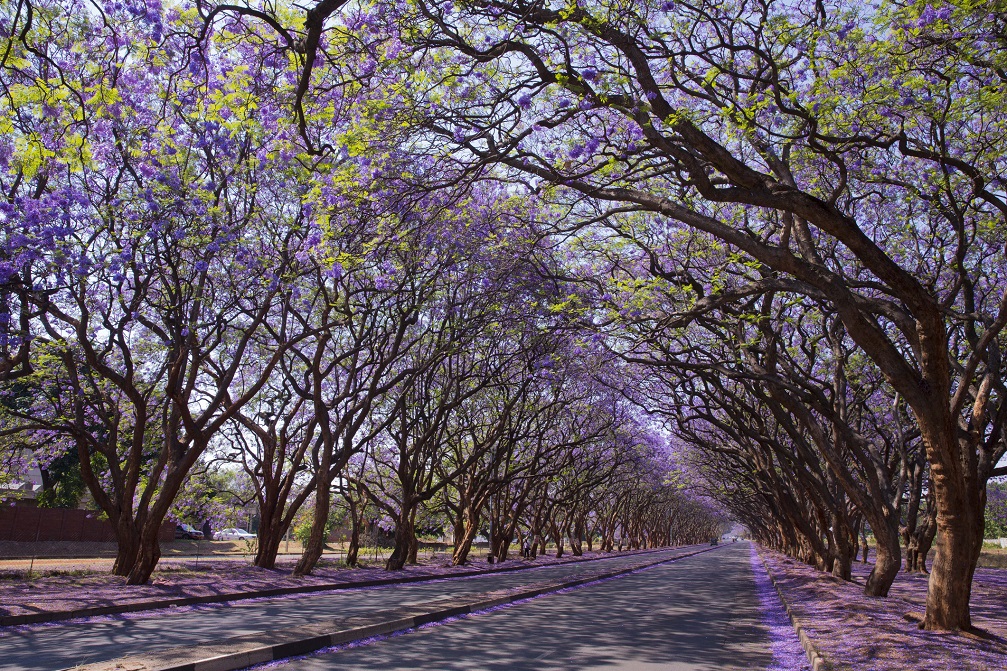


Zimbabwe is characterized by two main seasons: a dry season and a wet season. The former lasts from April to October and during this season rain and humidity are practically nonexistent. However, it can be quite cold, especially in the morning when temperatures are around 6°C. During the day, temperatures increase reaching 25°C, so make sure to bring the right clothes! November to March is instead characterized by the wet season. In these months you can expect a lot of rain as well as humidity. Morning temperatures are normally around 18°C while afternoon temperatures can rise up to 32°C.
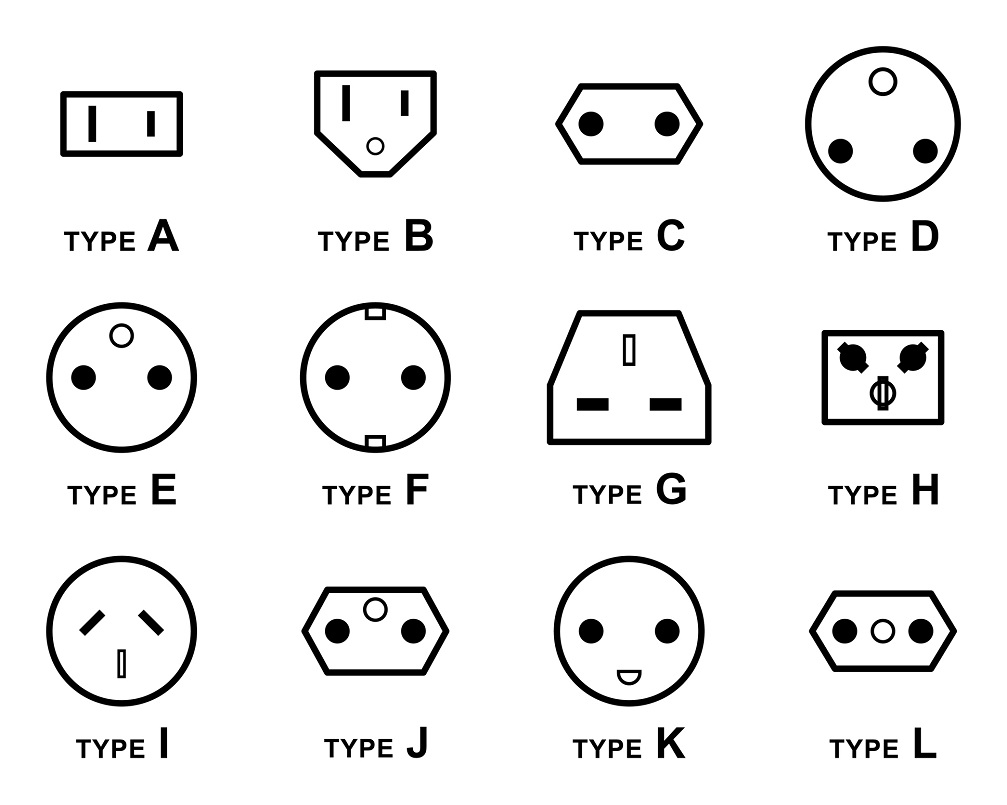


There are two associated plug types in use in Zimbabwe, type D and type G. Type D is characterized by three round pins in a triangular pattern while type G has three rectangular pins in a triangular pattern. Zimbabwe operates on a standard frequency of 50Hz and 240V supply voltage.
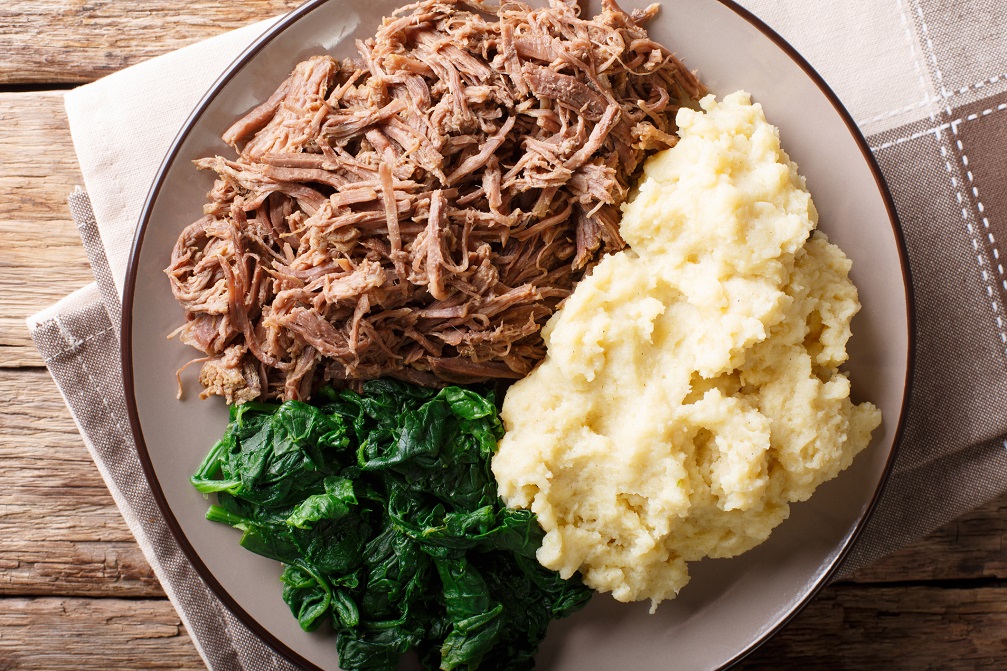


The traditional cuisine of Zimbabwe is incredibly varied and here you’ll be able to eat all types of food, from freshwater fish, meat, and even worms! The staple food of Zimbabwe is surely Sadza, a type of bread prepared with cornflour. Sadza is served either with beef stew or with covo, a local vegetable resembling chard. If you’re brave enough, you can even try the typical mopane worms, a real Zimbabwean delicacy! Even though they may look disgusting to most tourists, these worms have a high percentage of proteins and are extremely healthy for you. They can be eaten as a stew or fried. If you’re looking for a quick snack, don’t miss kapenta, a tiny fish that can be bought in every corner of the main cities.
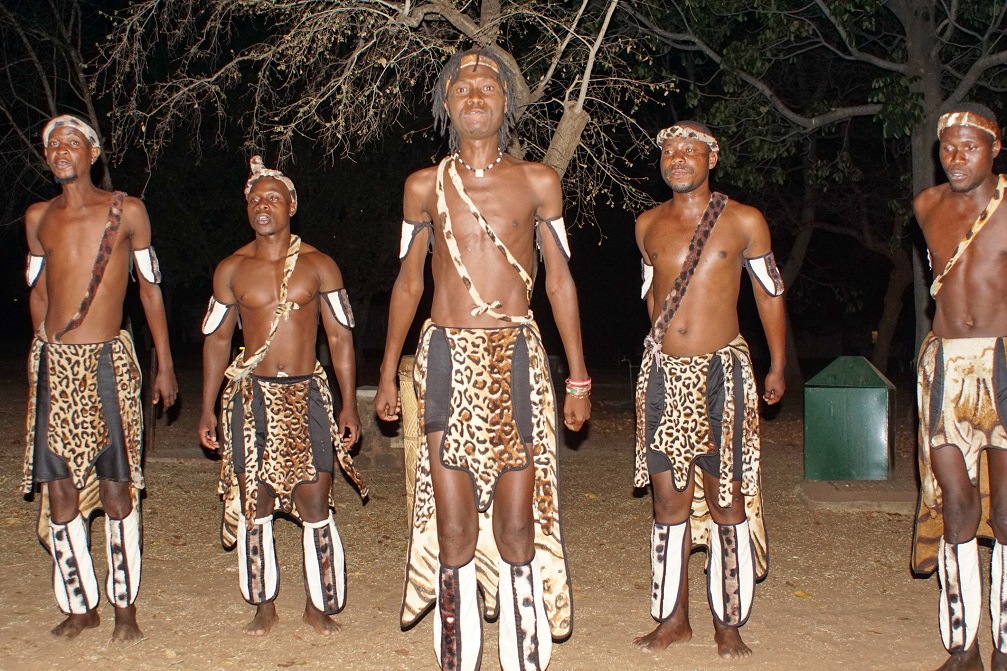


Zimbabwe is frequently hot, so make sure to pack some loose-fitting clothes made of natural materials such as cotton and linen. If you’re planning to go on a safari, opt for neutral colors such as khaki and avoid white as it will easily get dirty. Try to avoid blue and black as the tsetse flies are attracted by this color and their bites may give you African Sleeping Sickness. Long-sleeved shirts and long trousers will protect you from the strong sun during the day and from mosquitoes during the night. Make sure to also pack a good amount of sunscreen as it will be needed here!
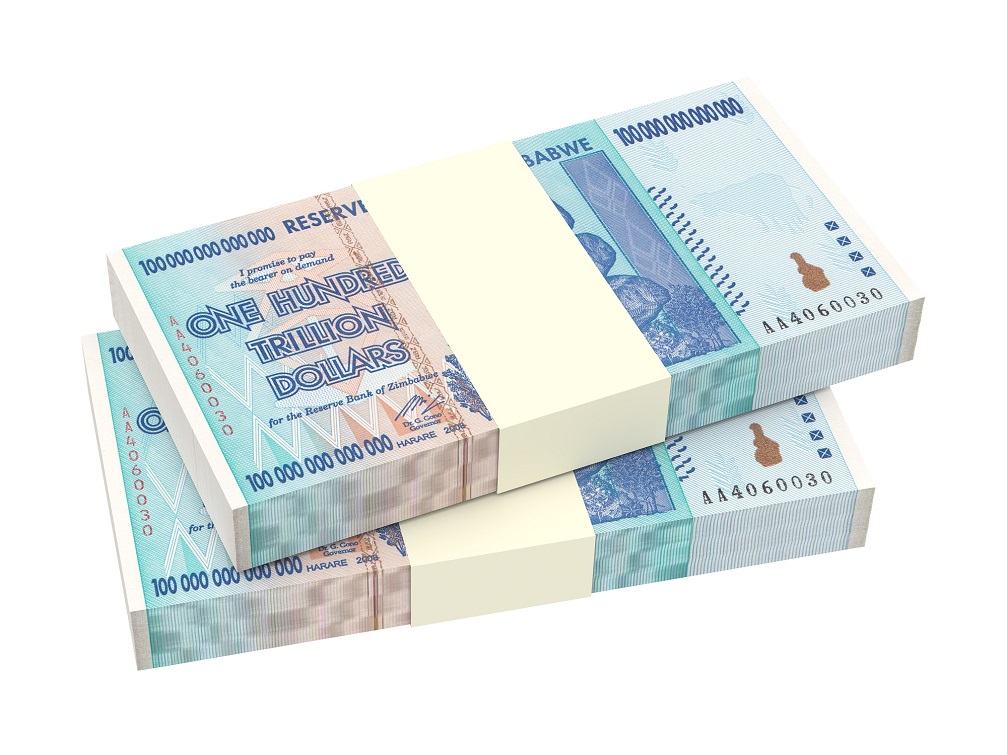


The national currency of Zimbabwe is the Zimbabwe dollar. £1 = 500 Zimbabwean Dollars. Prices in Zimbabwe are generally cheaper than in the Western world. For instance, a room in a dorm will cost you from £6-9 while a local meal will only cost you around £3-4. Normally prices in Zimbabwe are fixed however in markets and souvenir shops, you are expected to bargain. Keep in mind that taxis rarely have meters so make sure to negotiate the price before your ride. It’s important to know that on June 26, the Zimbabwean government decided to ban local trading in foreign currencies. This means that the US dollar and the South African rand, the two main currencies in use before the government’s ban, can no longer be used. For this reason, at the moment, the country has a shortage of paper cash and ATMs are not working. Before your trip, make sure to ask your hotel or tour operator which payment method they accept.
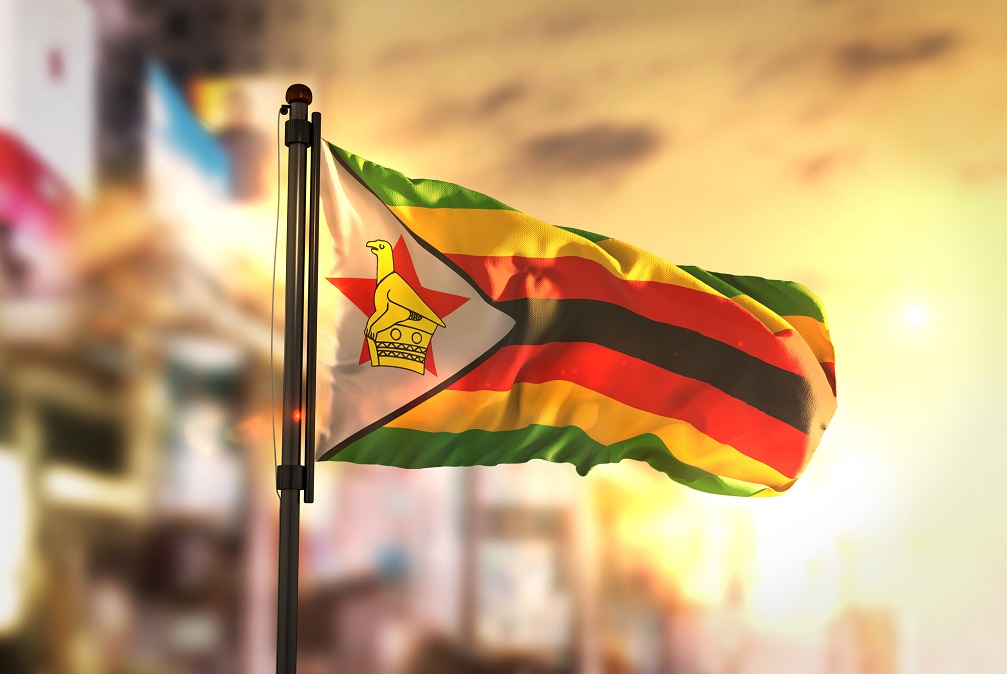


Zimbabwe holds the world’s record of most languages spoken in a single country, with 16 official ones. Shona is the most widely spoken as 70 percent of the population of Zimbabwe consider it its mother tongue. Ndebele is the second most spoken language in Zimbabwe while other official languages include Tonga, Tswana, Kalanga, Venda, and even English! Zimbabwean English is a dialect spoken by about 5 percent of the population. However, it’s used daily for conducting official business and for education purposes. For this reason, most Zimbabweans speak English as their second language.
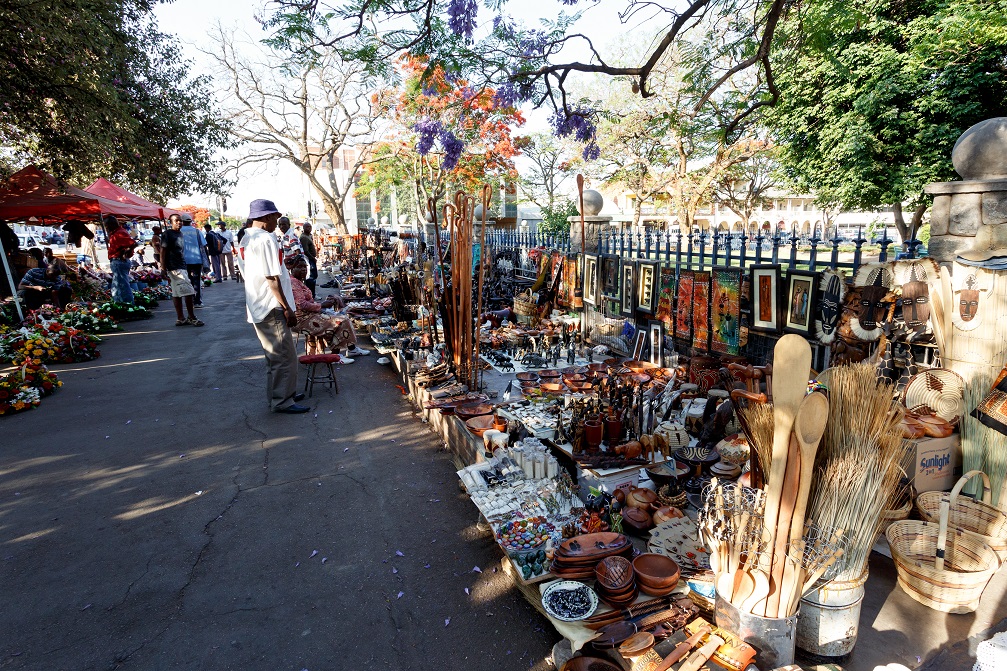


Zimbabwe is mostly populated by Shona people who make up 70 percent of the total population. The majority of them consider themselves Christians nonetheless the country has an incredible variety of cultures, traditions, and costumes. Under British colonization, the traditional Zimbabwean culture has massively changed moving towards more Western ideals and traditions. Today, only people in rural areas maintain the Zimbabwean traditional culture. However, some traditional aspects have remained. For instance, still nowadays, all over Zimbabwe, the elderly are given lots of respect and people are used to avoiding arguments with them and allow their opinions to prevail over their own. Within the Zimbabwean local tribes and communities music plays an important role and forms of art such as dancing, playing and singing are extremely valued.
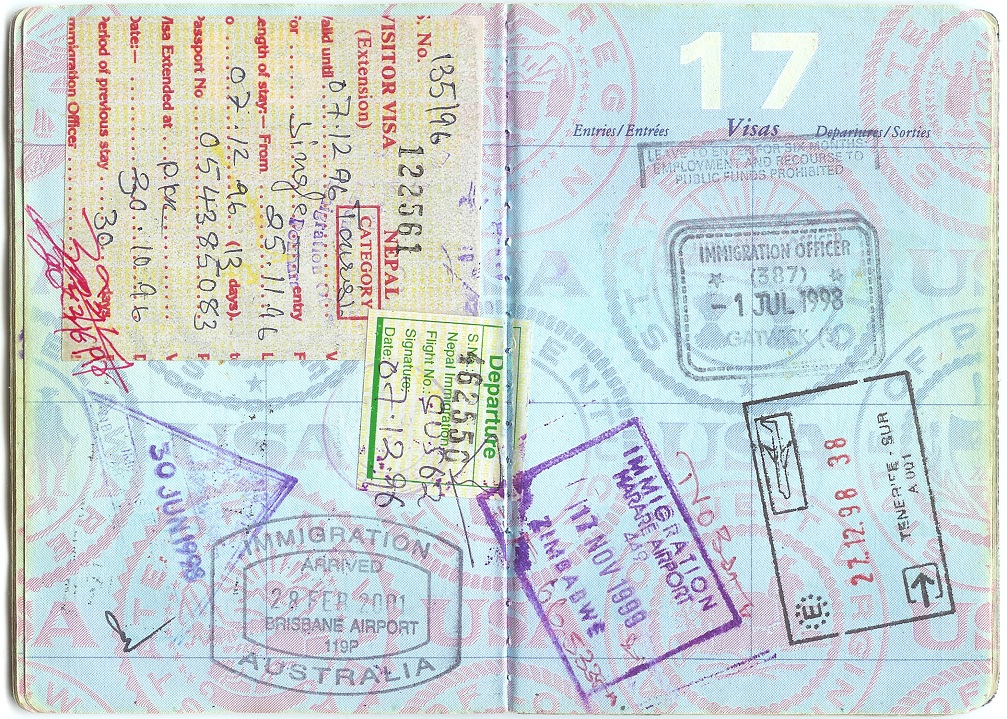


In order to visit Zimbabwe, you will need to get the right visa. Unfortunately, the Zimbabwean Embassy in London no longer issues visas and you will have to get one at your arrival. For a single entry visa you will have to pay 55 US dollars, so make sure you have enough cash at your arrival. Normally, travelers will be able to stay in the country for a period of 30 days, however, your visa can be extended. You may also consider getting a KAZA Univisa. This allows you to travel within Zimbabwe and Zambia with daily trips into Botswana. You can get one in many locations such as Harare Bulawayo and Victoria Falls airport. Make sure your passport has six-month validity on the day of your arrival as well as three blank pages.



Even though not many people take Zimbabwe into account when planning their holidays, this country is full of potential! Zimbabwe has plenty of national parks where you will be able to observe stunning landscapes. From the mountains of Chizarira National Park to the sandstone cliffs of Gonarezhou National Park and the unique Batoka Formation of Hwange National Park, the options are endless! Here you will also have plenty of opportunities to organize safaris where you will be able to see exotic animals such as hyenas, elephants and lions. But Zimbabwe is also a good destination for visitors interested in the history of Africa. This country is home to the World Heritage site of Great Zimbabwe, a medieval town that is believed to have been the capital of an unknown ancient kingdom. Are you intrigued? Keep reading for more information!



Zimbabwe is situated in the south of Africa and it’s bordered by Mozambique to the east, by South Africa to the south, and by Botswana and Zambia to the west. The capital, Harare, is situated in the northeastern part of the country. Zimbabwe is a landlocked country and doesn’t have access to the sea. However, here you will find one of the biggest waterfalls in the world, the majestic Victoria Falls.
Zimbabwe can be divided into three geographic regions, Highveld, Middleveld and Lowveld. The Highveld is a ridge that extends from the southwestern part of the country to the northestern part. It’s about 50 miles wide and it reaches its highest altitudes at Mount Inyangani at 8,504 feet. On both sides of the Highveld lies the Middleveld, a plateau of 3,000 to 4,0000 feet in height. The Middleveld makes up about 40 percent of the area of Zimbabwe. Here you will find bracken-covered hills and wooded savannas. Lastly, the Lowland can be found in the south of the country. Its elevation is around 2,000 feet and it’s hotter and drier than the other regions. The Lowveld is characterised by grassy plains and covers about 25 percent of the country.



Zimbabwe is characterized by two main seasons: a dry season and a wet season. The former lasts from April to October and during this season rain and humidity are practically nonexistent. However, it can be quite cold, especially in the morning when temperatures are around 6°C. During the day, temperatures increase reaching 25°C, so make sure to bring the right clothes! November to March is instead characterized by the wet season. In these months you can expect a lot of rain as well as humidity. Morning temperatures are normally around 18°C while afternoon temperatures can rise up to 32°C.



There are two associated plug types in use in Zimbabwe, type D and type G. Type D is characterized by three round pins in a triangular pattern while type G has three rectangular pins in a triangular pattern. Zimbabwe operates on a standard frequency of 50Hz and 240V supply voltage.



The traditional cuisine of Zimbabwe is incredibly varied and here you’ll be able to eat all types of food, from freshwater fish, meat, and even worms! The staple food of Zimbabwe is surely Sadza, a type of bread prepared with cornflour. Sadza is served either with beef stew or with covo, a local vegetable resembling chard. If you’re brave enough, you can even try the typical mopane worms, a real Zimbabwean delicacy! Even though they may look disgusting to most tourists, these worms have a high percentage of proteins and are extremely healthy for you. They can be eaten as a stew or fried. If you’re looking for a quick snack, don’t miss kapenta, a tiny fish that can be bought in every corner of the main cities.



Zimbabwe is frequently hot, so make sure to pack some loose-fitting clothes made of natural materials such as cotton and linen. If you’re planning to go on a safari, opt for neutral colors such as khaki and avoid white as it will easily get dirty. Try to avoid blue and black as the tsetse flies are attracted by this color and their bites may give you African Sleeping Sickness. Long-sleeved shirts and long trousers will protect you from the strong sun during the day and from mosquitoes during the night. Make sure to also pack a good amount of sunscreen as it will be needed here!



The national currency of Zimbabwe is the Zimbabwe dollar. £1 = 500 Zimbabwean Dollars. Prices in Zimbabwe are generally cheaper than in the Western world. For instance, a room in a dorm will cost you from £6-9 while a local meal will only cost you around £3-4. Normally prices in Zimbabwe are fixed however in markets and souvenir shops, you are expected to bargain. Keep in mind that taxis rarely have meters so make sure to negotiate the price before your ride. It’s important to know that on June 26, the Zimbabwean government decided to ban local trading in foreign currencies. This means that the US dollar and the South African rand, the two main currencies in use before the government’s ban, can no longer be used. For this reason, at the moment, the country has a shortage of paper cash and ATMs are not working. Before your trip, make sure to ask your hotel or tour operator which payment method they accept.



Zimbabwe holds the world’s record of most languages spoken in a single country, with 16 official ones. Shona is the most widely spoken as 70 percent of the population of Zimbabwe consider it its mother tongue. Ndebele is the second most spoken language in Zimbabwe while other official languages include Tonga, Tswana, Kalanga, Venda, and even English! Zimbabwean English is a dialect spoken by about 5 percent of the population. However, it’s used daily for conducting official business and for education purposes. For this reason, most Zimbabweans speak English as their second language.



Zimbabwe is mostly populated by Shona people who make up 70 percent of the total population. The majority of them consider themselves Christians nonetheless the country has an incredible variety of cultures, traditions, and costumes. Under British colonization, the traditional Zimbabwean culture has massively changed moving towards more Western ideals and traditions. Today, only people in rural areas maintain the Zimbabwean traditional culture. However, some traditional aspects have remained. For instance, still nowadays, all over Zimbabwe, the elderly are given lots of respect and people are used to avoiding arguments with them and allow their opinions to prevail over their own. Within the Zimbabwean local tribes and communities music plays an important role and forms of art such as dancing, playing and singing are extremely valued.



In order to visit Zimbabwe, you will need to get the right visa. Unfortunately, the Zimbabwean Embassy in London no longer issues visas and you will have to get one at your arrival. For a single entry visa you will have to pay 55 US dollars, so make sure you have enough cash at your arrival. Normally, travelers will be able to stay in the country for a period of 30 days, however, your visa can be extended. You may also consider getting a KAZA Univisa. This allows you to travel within Zimbabwe and Zambia with daily trips into Botswana. You can get one in many locations such as Harare Bulawayo and Victoria Falls airport. Make sure your passport has six-month validity on the day of your arrival as well as three blank pages.
Travel related news, information and inspirational articles and videos for travellers booking flights or holidays to Zimbabwe. Ask questions about travel in Zimbabwe and get answers from Zimbabwe experts
NEWS
Inspiration, Information and Travel Guides
MEET THE Zimbabwe EXPERTS
If you are looking to book a holiday to Zimbabwe or needs some help and advice planning travel to Zimbabwe then contact one of the UK based independent travel agents that specialise in Zimbabwe itineraries.
FEATURED VIDEOS
Your Travel Questions Answered
Ask any travel related question and get an answer from one of our experts that will provide you with an answer from their personal experience
There is no question for this category.

